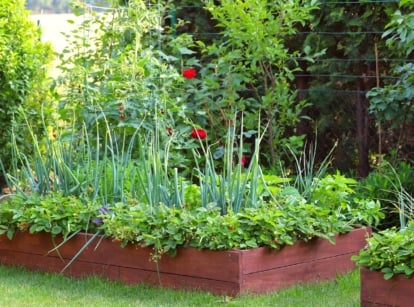How to Grow Amaranth Microgreens in 5 Easy Steps
Amaranth is one of the most visually striking microgreens you can grow. Its translucent violet color pops on the plate and makes an amazing addition to almost any dish. In just ten days, you can harvest some juicy microgreens by following these easy steps from Kevin Espiritu.

Contents
Amaranth is one of the most visually striking microgreens you can grow. Its translucent violet color pops on the plate and makes an amazing addition to almost any dish.
I became so obsessed with the look of it while growing it that I took a time-lapse of eight hours of growth just to see how it would look as it developed. Check it out:

If you want to try growing these colorful microgreens for yourself, follow this step-by-step guide.
What You’ll Need
You don’t need much to start growing amaranth micros. Aside from the seeds, you can probably find everything you need around your house. Here’s what I use when growing for restaurants and markets:
Seeds
Use one ounce of seed if you’re growing in a standard plant propagation tray. These are some great seeds to try:
- Burgundy Amaranth Seeds: The rich burgundy color is apparent in the leaves of this bright microgreen with a mild mustardy flavor.
- Hot Biscuits Amaranth Seeds: A green-leafed amaranth with caramel-colored plumes of seeds.
- Love-lies-bleeding Amaranth Seeds: A popular amaranth variety with green and maroon leaves packed with flavor.
- Edible Red Leaf Amaranth Seeds: An heirloom variety of amaranth grown for its edible leaves that is prepared as you would spinach and makes for a tasty microgreen.
- Coral Fountain Love-lies-bleeding Amaranth Seeds: Beautiful coral-pink tassels form on this plant with great eating seeds and microgreens.
- Salad Mix Spout Seeds: This is a unique blend of alfalfa, red clover, broccoli, and kale with a pop of color from burgundy amaranth.
Containers
As long as they have drainage holes, shallow kitchen containers are suitable for growing microgreens.
You can also use two standard planting trays, one for growing and one for covering. We recommend Epic 6-Cell Seed Starting Trays and Germination Domes & Bottom Trays. These provide excellent results for germination.
Growing Medium
A one-to-one ratio of potting soil and rehydrated coco coir is a good mix for microgreens. Alternatively, a simple seed starting mix will work equally as well. The key is a fine texture to provide as little resistance to germination and root growth as possible.
Grow Lights
When sowing indoors, grow lights work best for consistent lighting. If you don’t already have grow lights, try Epic Seed Starting Grow Lights Small or the Epic Seed Starting Grow Lights Standard.
If you don’t want to go the grow light route, place trays on a sunny windowsill and rotate them often to ensure the germinating seed doesn’t lean toward the light.
Extras
Use a sharp pair of kitchen scissors to harvest and a misting bottle to water the seeds. An old seasoning shaker is handy for an even distribution of seeds.
How to Grow Amaranth Microgreens
It’s easy and quick to grow microgreens. Follow these steps, and you can’t go wrong.
Step 1: Plant
Fill your container with soil, smoothing it out and lightly patting it down. Don’t compress it too much—you need to give the roots room to dig down and establish themselves.
After your container is filled, fill up your seed shaker with amaranth seeds and sprinkle them on the surface with an even distribution. Don’t cover the seeds with soil afterward. Simply leave them lying on the soil surface.
Step 2: Cover
Lightly mist your seeds with a spray bottle and cover the container so no light enters. I like to use two propagation trays, with one flipped upside down to block out the light. This creates the perfect environment for germination.
Over the next two days or so, lightly mist your seeds with water, but don’t overdo it. You don’t want to get mold.
Step 3: Care
After two days, your amaranth seeds should have germinated. If not, wait one more day and check on them. If they’re still not germinated, something went wrong. You either have bad seed, overwatered, underwatered, or the temperature isn’t right. It’s usually one of those four issues.
Keep them covered for 24-48 more hours until they get a bit lanky and look a light, translucent pink. Once they’re a half to three-quarters of an inch tall, it’s time to expose them to light.
Once they’re tall enough, place them in a well-lit area outside or under a grow light. Amaranth microgreens don’t need a lot of sun. In fact, if you place them in direct sun, you need to water more consistently, as your soil will dry up quickly, causing all of your greens to die.
Step 4: Harvest
If you’ve followed along, your amaranth micros should be about ten days old now. It’s the perfect time to harvest!
When harvesting, take extra care to harvest slightly above the soil, with extremely sharp scissors. You want a cut that will slice right through without pulling the greens at all to avoid getting soil and seed husks in your final product.
By harvesting this way, you avoid the need to wash your greens, which means they’ll last longer, and you’ll save quite a bit of time-intensive work.
Step 5: Store
After you’ve harvested, ensure your greens are completely dry before storing. Any moisture on the leaves or stems will shorten their shelf life. Put them in a sealed container in the refrigerator and they should last at least seven to eight days, if not longer.
Final Thoughts
Growing amaranth microgreens is like growing a crisp and tender flavor shot. Their impressive color is complemented by their ease of growth.









